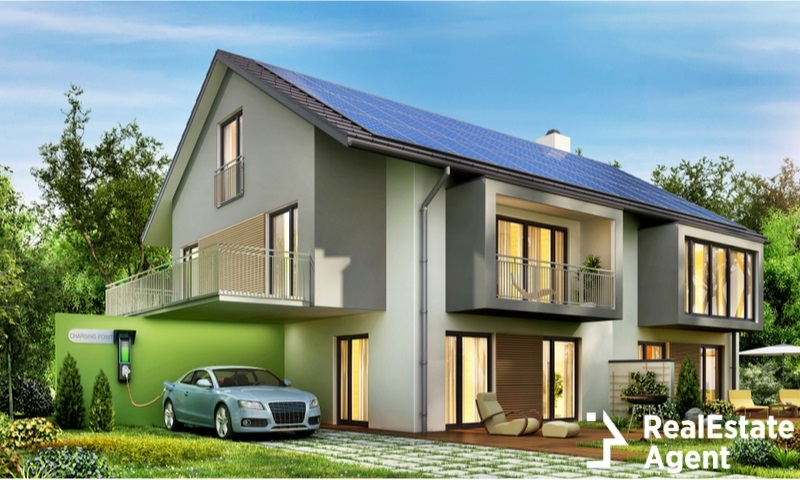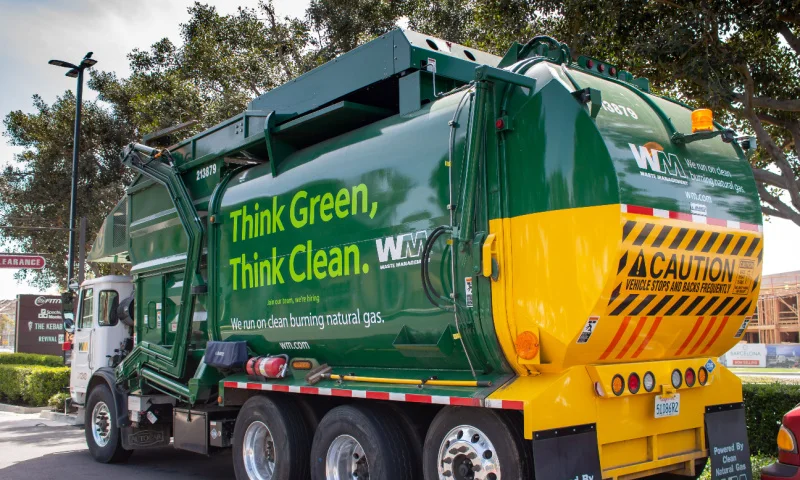With industries competing for better and more efficient ways to provide environmentally friendly energy, as well as the growing interest in renewable energy for a more sustainable future the solar roofing technology is constantly developing. As real estate developers are becoming aware of the environmental threats the attitude is changing for a greener future in real estate. More and more companies started to invest in green roof technology as the green roof benefits are growing in importance while the costs are starting to drop significantly year by year. It is now easier to invest in some of these off the grid real estate trends. Tesla, as a company that has been focusing on eco-consciousness through its electric cars, has joined the race and it’s making waves, as consumers learn to expect from Tesla’s CEO.
Solar energy has been around for a few years now and consumers are more likely to choose a system of solar panels nowadays then they had in the past. But there are still some factors that are important for consumers that have yet to be addressed. Factors that have hindered potential customers from investing in solar energy before. One of these is the aesthetics of the system based on solar panels. Well … it’s safe to say that Tesla’s solar roof technology will disperse any aesthetics based restraint consumers might have while other companies are also finding ways to address the customer’s pleas.
Solar technology through the years

Solar technology is not something new, although many people consider it the breakthrough technology of the 21st century. In reality, as far back as 1839, there have been scientists who explored the idea of electricity collected from the sun. Until Albert Einstein in 1905 focused the world’s attention on the potential of solar energy, however, it wasn’t considered a monumental discovery. In 1954 the final boost came from scientists Daryl Chapin, Calvin Fuller and Gerald Pearson through the development of the solar cell technology with added silicon, a way in which one could capture and then use the energy gathered from sunlight.
During the development of the space age between the late 1950s and 1960s, a new way of implementing solar technology was used to help power spacecraft or satellites. This led to the 1964 Nimbus satellite being launched that ran entirely on photovoltaic solar panels. The next step came from American President Jimmy Carter who ordered the installation of solar panels on top of the White House roof. This made the general public aware of the fact that solar panels could be used as a way to power their individual homes or businesses for a green building approach.
Finding cheaper and more effective ways to give access to solar energy is one of the ways through which we can limit our dependence on fossil fuels. Electric cars are more common than ever and the same goes for green energy sources through the development of solar panels that can be installed on top of your roof. Nowadays, because of those early discoveries, it is no longer uncommon to see fields of solar panels or services that rely 100% on solar energy or solar panels on residential roofs.
The prices also have decreased during the last decade and every day people are more likely to invest in green energy sources. The technology continues to develop while every year there are new and more aesthetically pleasing options available on the market. One of these newer technologies is the Solar Roof.
What is so great about Solar Roof technology?

The first and most important thing to know about solar roof technology is the fact that it’s not a traditional solar panel. You won’t have those bulky solar panels covering a portion of your roof, adding to the weight of your roof as well as being so very and incredibly visible. You’ll no longer have three, four or five solar panels on top of your roof that doesn’t match the tiles, shingles or overall aspect of your entire house while also drilling holes in the tiles without having a guarantee that they’ll survive a stronger wind. Those days are long gone if you are willing to invest in the latest green roof technology.
The solar roof technology replaces parts or the entirety of the traditional roof with an equivalent that also generates energy. It is installed in between your already existing or newly replaced roof, is connected to the required electrical wiring and can ensure your home’s energy consumption.
There are currently more types of solar roof technology that are modeling the green energy market for the upcoming future. They are either called Shingles or Tiles, both terms commonly used and known in the roofing industry. We’ll take a closer look at both and see which ones are more fitting for your particular house.
Rackless Solar Systems/Shingles

While rack-mounted solar systems are large, heavy and unpleasant looking, solar shingles are small, rectangular shaped solar panels that are set up alongside asphalt shingles of about 46 inches long and 17 inches wide. They are smaller than traditional solar panels but bigger than asphalt shingles. They are made out of monocrystalline solar panels that either use the traditional silicon solar cells or copper indium gallium selenide cells (CIGS), similar to the discovery from 1954 and are more aesthetically pleasing. They are added on top of your roof, but unlike the bulky rack-mounted solar panels, they offer a low profile option for solar energy on residential homes and offer protection for your roof. Rackless solar systems don’t cover all of a home’s roof.
CertainTeed
The most appealing and chosen item from CertainTeed’s line of solar technology in the CertainTeed Apollo II Shingles.
The price for a square foot coverage with this rackless solar system of shingles is between $11.45 and $13.10. For a 2,000 square foot roof the cost for this solar system would be around $25,200.
The technology is available nationwide.
SunTegra
The most affordable solar system from SunTegra and on the market currently is the SunTegra Shingle.
Priced between $10.35 and $11.60 per square foot, it will cover a 2,000 square foot roof for a cost of approximately $22,400.
The technology is available nationwide.
Solar Tiles Systems

By far the most aesthetically pleasing options on the market are the solar systems that mimic the aspect of tiles. These are available in different sizes and formats on the market, while some are yet to be mass-produced. The solar system is either part of the tiles or they can completely incorporate tiles. They are created out of monocrystalline silicon and are installed in such a way that they are completely integrated within your roof. It replaces the parts of your roof that are most exposed to the sun, replacing the tiles instead of being added on top of the concrete tiles.
CertainTeed
As the first company to develop this completely integrated solar system, CertainTeed’s Apollo II Tile is the second generation of the system available from them.
Priced between $17.40 and $18.25 for one square foot, it will cost you around $35,800 to cover a 2,000 square foot roof.
The technology is available nationwide.
SunTegra
SunTegra has a more affordable option of an equivalent quality. The SunTegra Tiles have an integrated ventilation system that allows the flow of air beneath the tiles.
The cost of the SunTegra Tiles goes at about $16.80 – $17.75 per square foot and with around $34,500 you can cover a roof of 2,000 square feet.
The technology is available nationwide.
Solar Roofing

The variant of solar roofing is a game changer as the manufacturers have created a solar roofing system targeted to customers that are interested in completely replacing their roof. This system does not add rack-mounted solar panels or rackless solar panels through shingles and it is even better incorporated into the roof as it is the entire roof. There are only two producers currently that can offer this kind of aesthetically pleasing solar system. They offer a way in which the entire roof is changed while only parts of it generate electricity through both solar panels shingles, tiles or slates, while other shingles, tiles or slates are identical in aspect but don’t include the photovoltaic panels.
Forward Labs
A newcomer in the solar roofing technology became a real competitor for the real game changing industry on the solar market. There are 8 colors available currently.
The cost of the solar roof panels produced by Forward are $12 per square foot for the PV sections and $8 for the non-PV areas. For a half-and-half system of PV sections and non-PV sections the price for a 2,000 square foot roof would come to be at around $20,000.
The technology is currently available in California and reservations can be made for within the US.
Tesla
Since 2016 Elon Musk promoted Tesla’s version of a solar roof and it created quite a lot of chatter as no one found it believable that the roof from the house behind Elon Musk was truly a solar roof. There are 4 models available currently and they can easily be confused with normal tiles.
Each square foot is priced between $22 and $26 while for a 2,000 square foot roof you could expect to spend between $44,000 and $52,000.
The technology is limited on availability nationwide.
Are the new green roof technologies worth it?
Many homeowners have been deciding against solar panels because of their unappealing aspect, their bulkiness and they were considered a bad investment in case of an unplanned sale. With the new green roof technologies, the whole investment will only be a win in case of an unforeseeable sale, not to mention the Federal Solar Tax Credit, but we’ll get to that in a bit. There are many green roof benefits that raise the value of your home and if the moment comes to sell a home in which you invested through a solar system even if you don’t get back your investment through electricity bills. A Tesla solar roof for example will bring back a return of investment (ROI) larger than the initial investment in case you decide to sell your home.
How does the Federal Solar Tax Credit work?
Investing in solar energy does not only limit or completely eliminate your energy costs, but it also allows you to obtain tax credit for the investment you made. The federal solar tax credit was created as a way of incentivising the general public to invest in green energy sources and is also known as the Solar Investment Tax Credit (ITC). Seeing as solar energy is becoming more and more common and not only less expensive but also more aesthetically pleasing, this tax credit reward is something that anyone who invests in solar energy can access.
Through the federal solar tax credit you can be reimbursed up to 26% of your spendings for the equipment used, permits required as well as the cost of the installation, by means of credit on the return of your federal income tax. The tax credit system is used as dollar-for-dollar devaluation which means that from a $100 investment with 26% federal solar tax credit, you will wind up only paying $74. This can be applied to those that own the solar system installed, so, you might want to reconsider solar leasing. It is also important to know that the 26% tax credit will no longer apply for solar systems installed after 2020. In 2021 the tax credit decreases to 22% and by 2022 it will only be available for commercial projects and limited to 10%.
In order to apply for the federal solar tax credit you must keep every receipt of the project, from start to finish, from the contractor to the materials used. As any other tax incentive, the paper trail, evidence and proof of spendings are required. The more receipts connected to the project, the bigger the tax credit so make sure you don’t throw away any bill. You also have to file Form 5695 along with your 1040 individual tax return completed in which you add the renewable energy credit information.
Conclusion
Investing in solar technology for your home might be a costly investment initially but overtime the lack of energy costs will help you recover that investment during the following years. While in some instances the costs for the whole investment is higher than a simple roof replacement or the addition of rack-mounted solar panels, the resale value is improved with the addition of a solar roof, while with rack-mounted solar panels it can be reduced. Some options are more fitting for those that want to switch from the basic grid electricity to solar. There are those people who want the bulky solar panels on top of their roof, while others will find solar roofs as more fitting when they are dealing with roof disrepair and are also interested in solar energy. It entirely depends on exactly what your situation is and how much you want to dip your toes in passive housing.
Let us know in the comments below if you have any questions in regards to the newer solar system technologies available and whether you would be interested in investing in this kind of green energy. Like & Share this article for a better, cleaner and brighter future.








